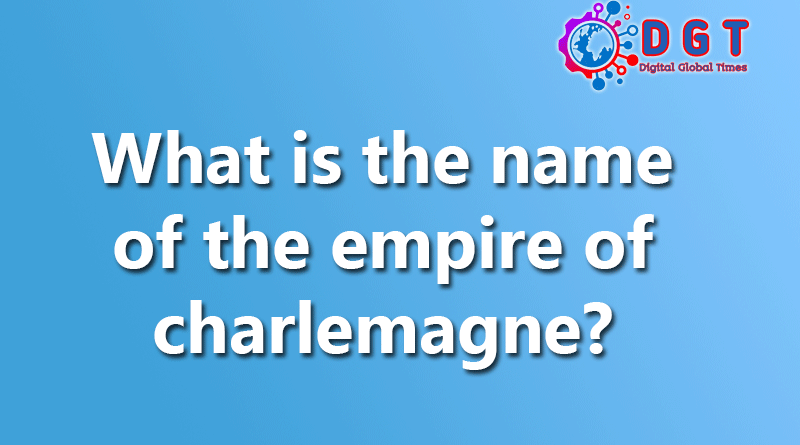What is the name of the empire of charlemagne?
The Carolingian Empire in 814, at its maximum expansion. The Carolingian Empire is the empire ruled by Charlemagne and his descendants, traditionally founded with the coronation of Charlemagne as Roman emperor by Pope Leo III on Christmas Eve in the 19th century.
Why is Charlemagne’s empire called the Holy Roman Empire?
The Holy Roman Empire: in 800 in Rome, Pope Leo III crowned Charlemagne as Emperor, thus establishing the Holy Roman Empire (“Sacred” because in the sign of Christ, “Roman” because it was inspired by the tradition of Rome).
What territories did Charlemagne’s empire include?
The empire, in addition to being a territorial reality – which in the Carolingian age (800-887) included France, Italy except the South, Germany, northern Spain or the March of Spain and the mixed-language area between France and Germany -, during the Middle Ages it ended up designating the (theoretical) power of government over …
What are the achievements of Charlemagne?
By force of arms, Charlemagne conquered northern Italy, pushing as far as Rome, without penetrating as far as the minor Langobardia. By vanquishing the Saxons, the Bavars and the Avars, he considerably enlarged the Frankish dominions towards the east.
What military campaigns did Charlemagne undertake and which territories did he manage to conquer?
To stem the threat to his kingdom posed by the presence of the Arabs in Spain, Charlemagne carried out numerous military expeditions beyond the Pyrenees, succeeding in 795 in conquering a territory corresponding to current Catalonia, the Spanish March, which allowed the Franks to control the two slopes …
Related questions
How many wives did Charlemagne have?
According to scholars, Charlemagne had four first-rate wives, marriages contracted to strengthen ties between the clans. He would also have a second-rank wife and at least six concubines, with whom he had twenty children, ten boys and ten girls.
What did Charlemagne’s empire include?
Unlike the Roman Empire, the reign of Charlemagne did not have its center in the heart of the city of Rome, but in the regions around the Rhine River, comprising territories that had never been conquered by the Romans. In this way the integration of the Germanic peoples was easier to manage.
Which territories are united to the Eastern Empire under Justinian?
The territory of the Byzantine Empire or Eastern Roman Empire included the Anatolian Peninsula, the coasts of the eastern Mediterranean and part of the Balkan Peninsula (including Greece), but also some western territories reconquered by Emperor Justinian I in the 6th century.
What are the first two Reichs?
Three different Reichs
Confrontations between the Holy Roman Empire and the Kaiserreich began even before the latter state was formed. Historians and politicians of the mid-19th century theorized an ideal state, the Machtstaat as a centralized, authoritarian and militarized state of power.
How long does the Germanic Holy Roman Empire last?
The Holy Roman Germanic Empire. Heir of Rome and the Carolingians, the Holy Roman Empire united peoples of different languages and customs in an indisputable character of universality for about eight centuries.
When was Charlemagne’s coronation?
Son of Pippin the Short and Bertrada of Laon, Charles became king in 768, on the death of his father. He initially reigned together with his brother Carlomanno, whose sudden death (which took place in mysterious circumstances in 771) left Charles the sole sovereign of the Frankish kingdom.
How do you go from the Holy Roman Empire to the Holy Roman Empire of the Germanic nation?
After the deposition of Charles the Fat, with the election of Arnolfo of Carinthia as King of Germany, who only connected to the Carolingian lineage in a secondary line, the transfer of the Imperial crown to the Germanic princes began.
Why is it called an empire?
An empire (from the Latin imperium, “military power”, “coercive power”) is conventionally a state entity made up of an extensive set of different territories and peoples (by language, religion, origin, customs and traditions), sometimes even very distant, subject to a single authority, normally (but not …
What were the names of Charlemagne’s collaborators?
To better administer his territory, Charlemagne divided it into committees chaired by the counts (in Latin comites “companions”): the accounts were public officials of the king, often his relatives, who collected taxes in the territory that had been assigned to them, administered the justice and summoned the army …
Who was the last emperor of the Holy Roman Empire?
His successor Charles V was the last emperor to be crowned by the Pope; after him, all were Chosen Emperors.
What were the wars that Justinian had to fight in order to carry out his political projects?
The greek-gothic war
In a desperate attempt to save at least part of her political project, she married a cousin, Theodato, an exponent of that gothic nobility to which she was disliked; however, he ousted her from power, imprisoned her on a small island in the lake of Bolsena and then had her brutally killed.
What peoples did Justinian conquer?
In the fifth century the Eastern emperors had chosen a defensive policy towards the Germanic peoples, but the policy implemented by Justinian was one of aggression: in 534 he attacked and conquered the kingdom of the Vandals; then it was the turn of the kingdom of the Ostrogoths conquered between 535 and 553; in 554 came …
What was the consequence of the coronation of Charlemagne as emperor?
THE CORONATION AS ROMAN EMPEROR
Charlemagne intervened in his favor in the year 800, going down to Italy and restoring it to the papal throne, condemning the conspirators to exile in France.
Why is Charlemagne important in the history of the Middle Ages?
Charlemagne is important for the establishment of the feudal system and also for culture as he founded the first Carolingian school. When he is crowned emperor on Christmas Eve in the nineteenth century in the Church of Rome, he fulfills an emblematic relationship as he puts the whole empire under the power of the Church.
What are the Merovingians?
Merovingian Dynasty that reigned over the Franks from the mid-5th century. in the mid 8th century. Clovis (466-511), king of the Salient Franks, extended his reign to the whole of Gaul. After him, the territory of the Franks expanded further, although it was divided into various kingdoms.
Why does Charlemagne repudiate Ermengarda?
Repudiated by the Carolingian king in 771 on the pretext of not being able to give him an heir, she would take refuge in Brescia, in the female monastery, founded by the will of Desiderio and his wife, Queen Ansa, where she would have died, after learning of the new marriage of Carlo with the Swabian Hildegard always in 771, for …
Why was Charlemagne called the Great?
The appellative Magno (in Latin Magnus, “great”) was given to him by his biographer Eginardo, who entitled his work Vita et gestae Caroli Magni. Thanks to a series of successful military campaigns he expanded the Frankish kingdom to include a large part of Western Europe, he supported trade throughout Europe.
How is Charlemagne’s empire organized?
Unlike the Roman Empire, the Empire of Charlemagne did not have a real administrative organization. The territory was divided into counties, which the emperor entrusted to the counts. … The political organization of the Empire was therefore based on the relationship of fidelity and dependence between the king and his vassals.
Visit Digital Global Times for more useful and informative answers!

